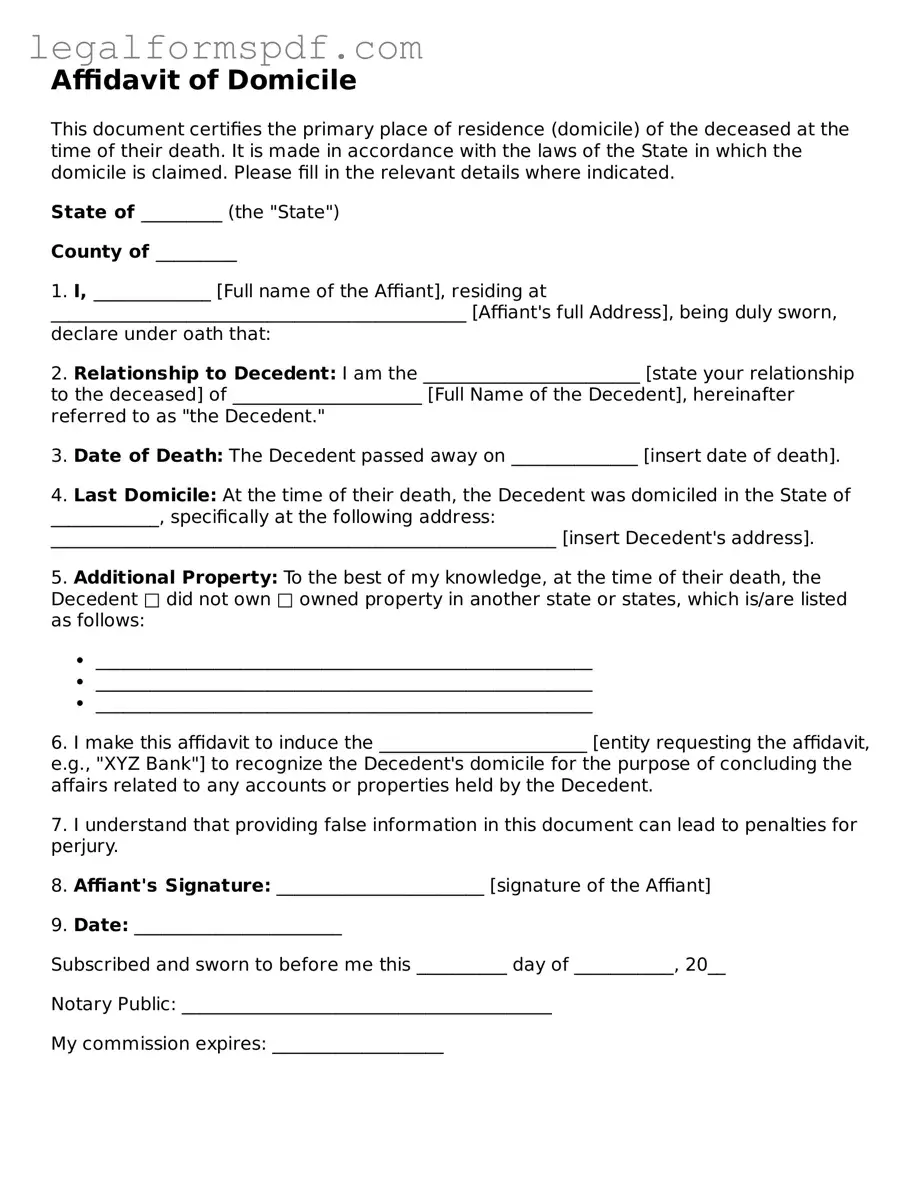What is an Affidavit of Domicile and why might I need it?
An Affidavit of Domicile is a legal document that confirms where someone lived at the time of their death. It's often required by financial institutions or during the probate process to help manage or distribute the deceased's assets. For instance, if you're inheriting stocks or need to transfer ownership of securities, this affidavit provides the necessary proof of the decedent's residence.
Who is authorized to complete the Affidavit of Domicile?
Typically, the executor of the estate or the administrator assigned by the court has the authority to complete it. This person is responsible for gathering the necessary information and signing the affidavit in the presence of a notary public, certifying that the information provided is true to the best of their knowledge.
What key information is required on the Affidavit of Domicile?
The document must include the full name of the deceased, their last address, the date of their death, and a statement confirming the state in which they were legally considered to have their permanent home at the time of their death. It also includes the signature of the affiant (the person making the affidavit) and the date signed, typically in front of a notary public.
How do I obtain an Affidavit of Domicile form?
Forms can usually be obtained from the office of the court clerk in your local jurisdiction, a lawyer, or online legal resource websites. Each state may have specific requirements or formats for the affidavit, so ensure the form meets your state’s criteria.
Do I need a lawyer to complete the Affidavit of Domicile?
While it’s not mandatory to have a lawyer, consulting one can help ensure the affidavit is completed correctly and meets all legal requirements, especially if the estate is complicated. A lawyer can also offer guidance on the probate process and how to handle the deceased's assets properly.
What happens after the Affidavit of Domicile is completed?
Once the affidavit is correctly filled out and notarized, it's submitted alongside other necessary documents to the relevant financial institutions or courts. This action allows the estate to be administered, including the transfer of securities or assets as dictated by the deceased’s will or state law.
Is the Affidavit of Domicile the same in every state?
No, while the purpose of the Affidavit of Domicile is generally consistent, the specific requirements and the form itself may vary from one state to another. It's important to verify that you are using the correct form and following the proper procedures as dictated by the state in which the deceased was considered to have their domicile.
